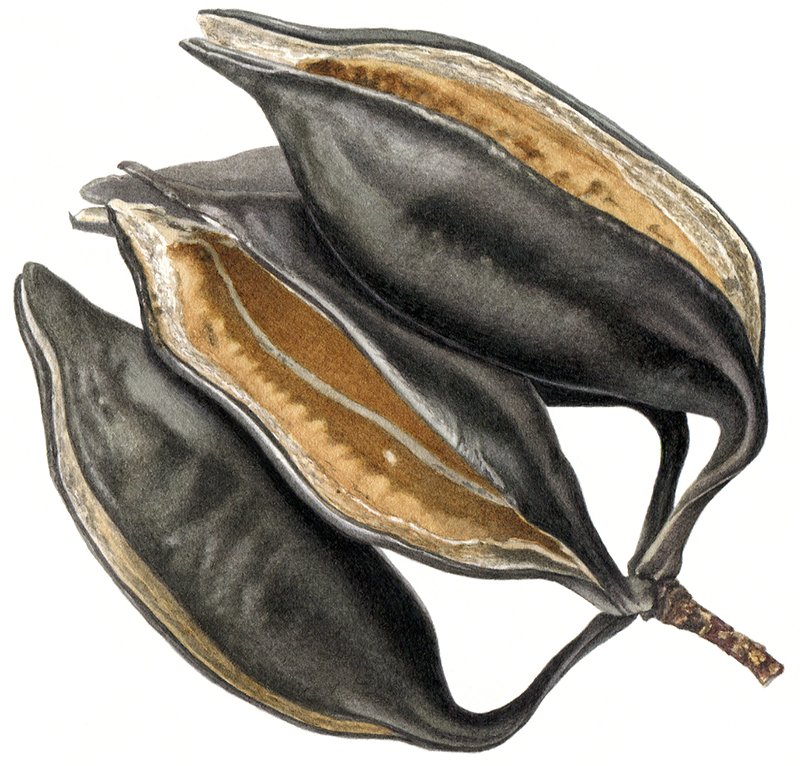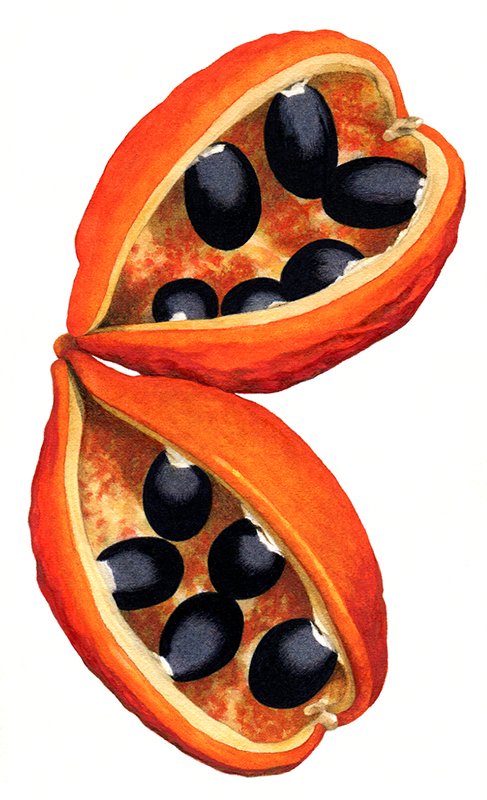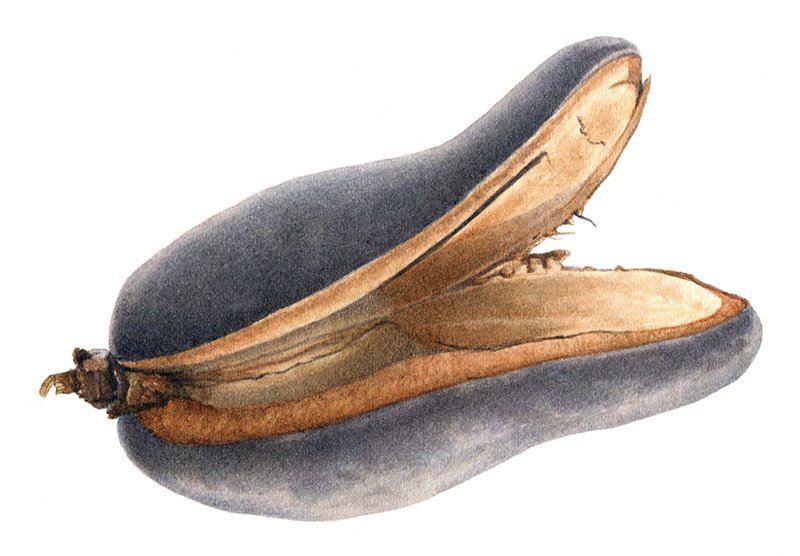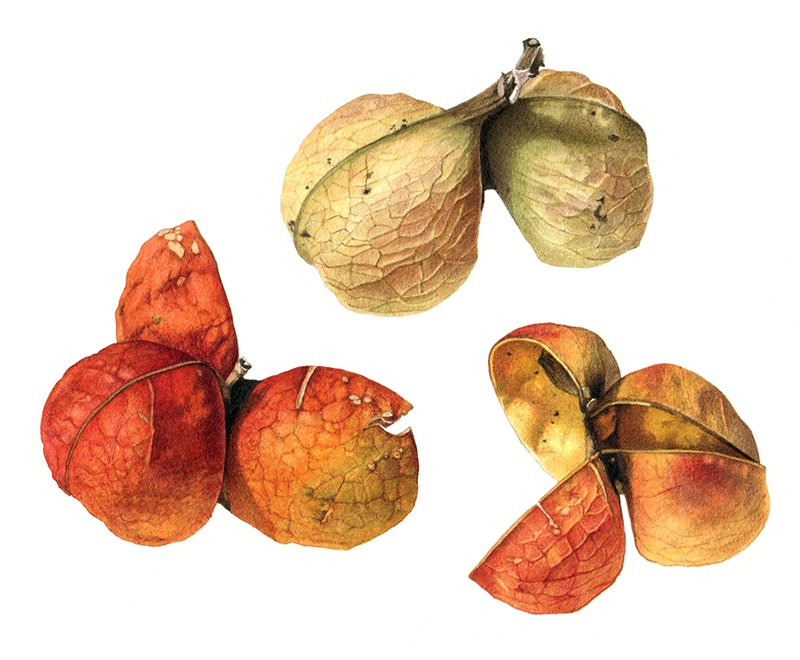Illustrated: Australian plant seeds

TO SURVIVE IN Australia’s unforgiving climate, trees and shrubs have developed ingenious ways to release and spread the seeds that are their species’ lifeforce. Whether the size of a grain of sand or a ping-gong ball, a seed carries a plant’s genetic material and, to give it the best possible chance of taking root, many plants use clever mechanics and careful timing strategies.
ILLAWARRA FLAME TREE Brachychiton acerifolius
This tree is ablaze with colour in late spring, when brilliant red flowers cover its branches. The flowers are followed by large, woody seed pods up to 10cm long. The boat-like pods split open to reveal many yellow seeds embedded in fine, interlocking hairs. The seeds, which resemble corn kernels, can be toasted and eaten, but the hairs are highly irritating to the skin.

A PEANUT TREE Sterculia quadrifida
In late summer, peanut trees are covered in creamy-white, lemon-scented flowers. These give way to large, leathery pods that change colour from green to fiery orange and red as they ripen. Once mature, the 8cm-long capsules split open to reveal up to eight shiny black peanut-sized seeds. These have a nutty texture and can be eaten raw or roasted. The seeds germinate easily, often within days of their release.

CROWS ASH Flindersia australis
In late autumn, this tall rainforest tree produces woody fruit covered in short, blunt spikes. Once ripe, each 10cm-long seed pod splits into five boat-shaped valves. They contain long, light seeds with large papery wings. The seeds start to sprout about a week after their release. The pods are extremely hard and durable. Once open, they resemble wooden starfish and are often used in native flower arrangements.

WALLUM HAKEA Hakea actites
The wrinkled, egg-shaped fruit of this coastal shrub contains two seeds. The pods remain on the plant for years and only split open when the branches carrying them die. During a fire, the fruit’s thick, woody casing protects the seeds, which are often released in numbers in burnt areas when the parent dies. Once the seeds are released, seedlings sprout within about a month.

A WOODY PEAR Xylomelum benthamii
This tall shrub is named for its large, woody, pear-shaped fruit. Each hard capsule may reach up to 10cm in length. It contains two seeds with large papery wings that are released when the fruit splits open. This only occurs when the branches die, often following a bushfire. It can take up to three years for a young tree to start bearing fruit.

A COAST BANKSIA Banksia integrifolia
From late summer to July, hundreds of densely packed pale yellow flowers blossom on this banksia’s cylindrical woody spikes. These wither away to reveal a woody cone, which measures up to 12cm long and 5cm wide. The cone is covered in small, green follicles that eventually fade to dark grey. Each follicle contains two tiny black seeds, separated by a wooden divider. A seed, which has a long, papery wing, matures after about a year.

BLACK BEAN Castanospermum australe
Also known as the Moreton Bay chestnut, this large tree produces showy displays of red and yellow flowers in spring. Once it sheds its flowers, large numbers of cylindrical seed pods develop. Pods can reach up 20cm in length, and have diameters of about 6cm. When ripe, they split open to reveal up to five smooth, bean-like seeds. The seeds weigh about 30g each and are poisonous when raw.

TULIPWOOD Harpullia pendula
Each winter, coastal forests and city streets burst into colour as clusters of yellow and orangey-red seed capsules form on the tulipwood’s branches. Each fruit features two inflated, papery valves that split open to reveal two glossy, pea-sized black seeds. In late spring, greenish-white flowers with salmon-pink stamens appear, once more beginning the plant’s annual seed cycle.

READ MORE:
- Gallery: orchids of Australia.
- The wildflowers of Western Australia.
- Gallery: the seeds by Anne Geddes.
- Your guide to edible Australian flora.




